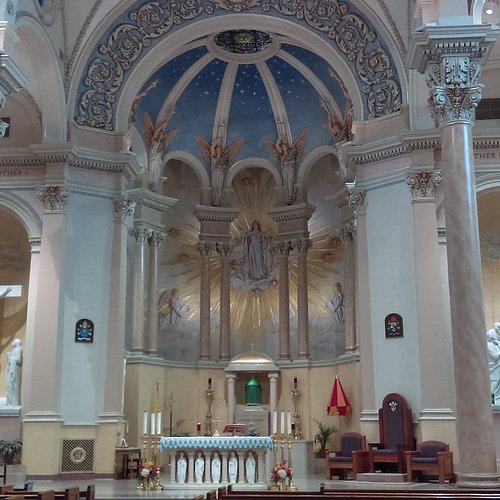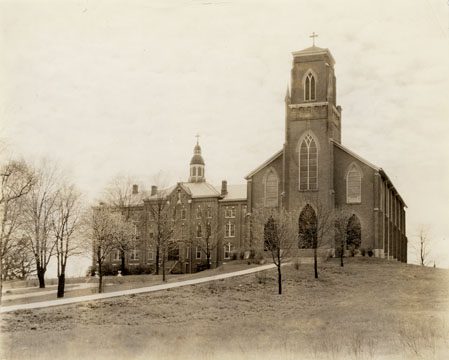Commemorating Holidays at Logan Ohio Churches: Traditions and Faith Services
Commemorating Holidays at Logan Ohio Churches: Traditions and Faith Services
Blog Article
Checking Out Historic and Modern Churches for All Faiths
The exploration of historical and modern churches functions as a profound lens whereby we can take a look at the evolution of faith and area dynamics throughout societies. From the complex layouts of old cathedrals to the minimalist aesthetic appeals of contemporary worship rooms, these structures envelop the essence of their time and area. They are not simply churches; they are reflections of societal values and collective desires. As we think about the value of these spiritual websites, one should ponder exactly how they continue to shape interfaith discussion and neighborhood involvement in today's varied world.
Building Designs With the Ages
As architectural expressions of spirituality, churches have developed dramatically over the centuries, reflecting the varied theological and cultural impacts of their times - Logan Ohio Churches. The architectural styles of churches are as varied as the idea systems they stand for, each design symbolizing specific spiritual doctrines and neighborhood worths
Very early Christian design emerged from Roman basilicas, identified by basic, longitudinal structures featuring a nave and aisles. As the Middle Ages progressed, Gothic design took hold, marked by sharp arcs, ribbed safes, and flying buttresses, which permitted larger tarnished glass home windows that brightened insides with magnificent light. The Renaissance duration brought a revival of timeless elements, stressing proportion and balance, while Baroque architecture presented fancy information and dramatic kinds, symbolizing the splendour of spirituality.
In the 20th and 19th centuries, the rise of different movements, such as Crafts and arts and Modernism, mirrored societal changes and a departure from traditional forms. Today, modern churches usually blend cutting-edge styles and modern-day materials, embracing sustainability and community engagement. This abundant tapestry of architectural designs illustrates the continuous dialogue in between confidence and layout, showcasing how churches continue to adapt to the spiritual requirements of diverse populaces across the globe.
Famous Historic Churches

Another remarkable instance is the Notre-Dame Basilica in Paris, commemorated for its French Gothic design. Its detailed façade and spectacular tarnished glass windows show centuries of devotion and creativity, making it a symbol of both belief and durability, specifically after its recent remediation adhering to the ravaging fire in 2019.
In the Americas, the historic Goal San Juan Capistrano in The golden state showcases Spanish colonial design, highlighting the very early Catholic missions that played a crucial function in the area's cultural advancement.

Furthermore, the Hagia Sophia in Istanbul, initially created as a cathedral, represents a mix of Christian and Islamic heritage, showcasing the abundant tapestry of background that churches commonly symbolize. Each of these historical churches not just offers as a location of praise yet additionally as a social spots, preserving the narratives of varied neighborhoods throughout time.
Modern Church Innovations
Modern churches are increasingly accepting ingenious layouts and technologies to improve the prayer experience and foster neighborhood interaction. These advancements manifest in various forms, from architectural innovations to electronic assimilation. Several contemporary churches feature open, flexible rooms that can be quickly reconfigured to accommodate diverse activities, such as solutions, celebrations, and curricula.
Including innovation is extremely important in modern church layout. High-quality audio-visual systems, live streaming capacities, and interactive display screens enable churchgoers to connect not only within their walls but also with a more comprehensive audience online. This electronic outreach has become vital for maintaining community ties, specifically in an age where many individuals seek spiritual links past traditional settings.
Sustainable style methods additionally play an important function in modern-day church innovations. Many establishments are going with environmentally friendly products and renewable resource sources, showing a dedication to ecological stewardship that reverberates with congregants.
Additionally, the assimilation of art and imagination right into worship rooms, via multimedia, installments, and murals presentations, offers to enrich the spiritual environment, making the experience much more immersive. These innovations jointly mirror a shift in the direction of a much more comprehensive and dynamic strategy to prayer and neighborhood life.
Community Influence of Churches
Churches play a crucial function in forming and boosting communities, often tipping up to attend to neighborhood requirements and difficulties. Past their spiritual features, these institutions frequently participate in social outreach and offer crucial solutions that promote area cohesion. Numerous churches operate food financial institutions, shelters, and counseling services, addressing issues such as hardship, homelessness, and mental health.
Furthermore, churches usually work as meeting place for community occasions, helping with dialogue and unity among varied groups. By hosting curricula, workshops, and social events, they encourage individual growth and cumulative empowerment. Their engagement in local advocacy initiatives amplifies the voices of marginalized communities, contributing to social justice campaigns.
In addition, churches frequently collaborate with regional organizations, improving their influence with collaborations that incorporate resources and know-how. This interconnectedness enhances community connections and promotes a sense of belonging among locals.
Essentially, churches are not simply churches; they are important to the social fabric of their communities. Their multifaceted payments-- spiritual advice, social services, and neighborhood activism-- play a vital function in fostering resilience and positive adjustment within society.
Checking Out Churches Around the World
When discovering the varied landscapes of spirituality, visiting churches all over the world supplies an one-of-a-kind home window right into the social and imaginative expressions of faith. Each church offers as a testimony to the history and values of the community it represents, reflecting regional traditions and building styles.
From the majesty of St - Logan Ohio Churches. Peter's Basilica in Vatican City to read this article the minimal elegance of Tokyo's St. Mary's Cathedral, these spiritual spaces symbolize an abundant tapestry of human experience. The complex discolored glass of Chartres Sanctuary in France tells scriptural stories, while the dynamic murals of the Ethiopian Orthodox churches illustrate the country's unique spiritual heritage
Along with showcasing creative proficiency, churches frequently serve as centers of community and social interaction, holding events that why not try here enhance bonds amongst congregants. Many also use possibilities for interfaith dialogue, promoting understanding and respect amongst various idea systems.
Traveling to these churches enables site visitors to appreciate the global themes of hope, love, and empathy that go beyond social barriers. Whether one determines with a certain confidence or not, the experience of checking out these spiritual websites enriches our understanding of the human quest for definition and link.
Verdict

The expedition of modern and historical churches serves as an extensive lens through which we can analyze the advancement of confidence and neighborhood dynamics throughout societies. Today, contemporary churches typically mix innovative layouts and modern materials, embracing sustainability and area engagement.Throughout Homepage history, countless churches have arised as iconic sites, each telling a special story of artistry, neighborhood, and belief.Modern churches are increasingly welcoming innovative designs and technologies to improve the prayer experience and foster neighborhood involvement.Additionally, churches usually offer as event places for area occasions, promoting discussion and unity among diverse groups.
Report this page